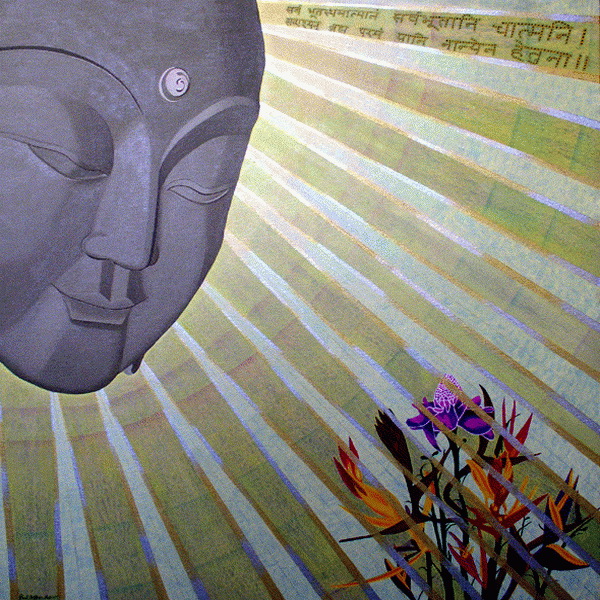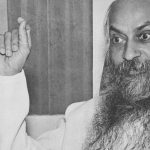Pratiksha Apurv describes Osho’s favourite form of meditation from the 112 forms known, and says that it can transport you to bliss. Published in ‘Speaking Tree’, India, on April 16, 2017.
Just walking on the busy streets of Delhi, Mumbai, Kolkata or in any of the busy metropolises that most city people live in, you get to see so many different people, shops, sights, sounds, besides myriad different street scenes. In those moments of walking, if one can simply watch oneself walking, if we can just witness our steps in full alertness, in full awakening, then that very moment we become aware that we are not the physical body that is walking on the street watching everything, but that there is something else inside our physical body that witnesses and watches the street scenes passing by, without any thoughts in the mind. That very moment, we become separate from it — only the witness remains; everything else moves past us as objects. And, this is not just about walking on a busy street. Whatever we are doing, we are not the doer; just watchers, and we are simply allowing things to happen just by witnessing our thoughts. With the thinking mind, we become judgemental, like someone standing in between the seer and the seen.

Witnessing, Oil on Canvas, 36″ x 36″, 2008
Normally, while walking on a busy street, we are judging and evaluating the shops, people, and the other passing scenes — as either good, bad or indifferent — and the moment we become judgemental, we enter into the thought process. In witnessing, a moment comes when there is no thought and one is no more the mind. We are just the witness — the watchers — and when we analyse that, we realise that that is the moment of self-knowing. In my painting, titled Witnessing, I have tried to depict this ultimate alchemy of witnessing.
My painting is inspired from the tenth shloka of the Kaivalya Upanishad from the Atharv Veda — Sarv Bhutastha matmanm Sarvbhutani Sasyan Brahma Paramam Paani Naanyen Hetuna. (Just by witnessing and experiencing your own self in all beings and all beings in yourself, one can attain the highest Brahma or enlightenment and this is the only way.) Osho says that from out of the 112 methods of meditation, he has chosen the most simple and the one that can be most easily done — which he called witnessing. In his method, first comes the body, second, the mind, third, the heart and Osho says, the fourth happens on its own. “I call my way the fourth way because after the third you cannot do anything. Once your emotions and moods disappear, suddenly there is a quantum leap — the witness has nothing to witness anymore. It comes home. It witnesses itself. It becomes the seer and the scene, the object and the subject. This experience of absolute organic unity of our consciousness has been called by different names — Moksha, Nirvana, Liberation, and Enlightenment.”
And, for this meditation, one does not need to sit somewhere in silence. It can happen anywhere — while walking on the streets, travelling in a train or at work. This witnessing is for both beautiful and sad moments. When the mind becomes selective when watching just the finest and beautiful moments, the other side of the coin will also emerge. When that happens, it brings memories of despair and sadness. In such a situation, one cannot be a witness. We, therefore, need to get rid of both beautiful and sad feelings to enter the vast ocean of witnessing. Witnessing is so profound that people in that state will not be able to express it. A great silence will arise in the heart and we will become aware of the blissfulness of life and the vastness of our own being. And, that very moment, the witness and witnessed will be separate, fully aware of existence.
Saakshi Bhaav
This is what Krishna told Arjuna in Chapter 4 of the Bhagwad Gita: Karmanyakarma Yah Pasyedakarmani Cha Karma Yah, Sa Buddhimanmanusyesu Sa Yuktah Kritsnakarmakrut. Krishna’s message is very deep and summarises the very essence of the Gita. What he is saying is that when one sees inaction in action and knows fully well that we are just witnessing it and the supreme soul is enabling it, this is Saakshi Bhaav, this is witnessing, and we remain unattached and unaffected by it. The secret of witnessing is simply watching our daily routine of beautiful moments, happiness and sufferings.
Again in Chapter 5, Krishna talks about nondoing and witnessing: Sarva – karmani Manasa Sannyasyaste Sukham vashi, Nava – Dvare Pure dehi Naiva Kurvan Na Karayan. Lord Krishna is saying here that the whole body comprised of nine openings or nine gates and the soul which is the king of the body can live happily when they realise that they are neither doing nor are the doer — but are mere witnesses.
Quote from Osho, The Last Testament, Vol 4, Ch 15
 Pratiksha Apurv – pratikshaart.com
Pratiksha Apurv – pratikshaart.com
More articles by or about Pratiksha on Osho News




Comments are closed.